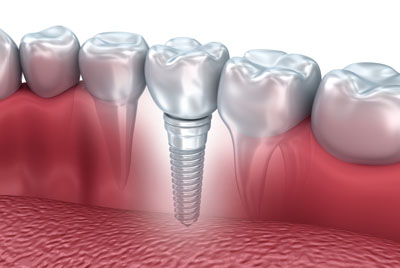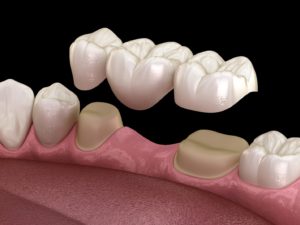Losing a tooth or multiple teeth can not only impact your smile but also affect your oral health and functionality. Fortunately, several treatment options are available to fill the gap caused by missing teeth. In this article, we’ll explore and compare different solutions to help you make an informed decision. Let’s dive in!
The missing tooth conundrum ! What to do?

| Option | Description | Pros | Cons | Cost |
|---|---|---|---|---|
| Dental Implants | Surgically placed artificial tooth roots that provide a sturdy foundation for a replacement tooth or dental crown. | – Permanent solution with natural look and feel. – Preserves jawbone and prevents bone loss. – Restores oral functionality. |
– Invasive procedure requiring surgery. – Healing time and multiple visits may be needed. – Higher cost compared to other options. |
$$-$$$ |
| Dental Bridges | Prosthetic teeth anchored to adjacent teeth or dental implants to “bridge” the gap. | – Restores appearance and functionality. – Can be more affordable than implants. – Faster treatment process compared to implants. |
– Requires alteration of adjacent teeth. – May increase the risk of decay or damage to supporting teeth. – May need replacement over time. |
$$-$$$ |
| Removable Dentures | Custom-made removable appliances that replace missing teeth and rest on the gum tissue. | – Restores smile and chewing function. – More affordable compared to implants or bridges. – Non-invasive and reversible option. |
– May feel less natural and comfortable. – Requires regular daily removal and cleaning. – Can affect speech and chewing efficiency. |
$ |
| Partial Dentures | Removable dentures designed to replace one or more missing teeth while fitting around existing natural teeth. | – Restores appearance and function. – Can be cost-effective for multiple missing teeth. – Reversible and non-invasive. |
– May feel less comfortable. – Requires regular daily removal and cleaning. – Can affect speech and chewing efficiency. |
$-$$ |
| Dental Bonding | Application of tooth-colored resin material to fill the gap and reshape the adjacent teeth. | – Quick and painless procedure. – Relatively affordable compared to other options. – Non-invasive and reversible. |
– Not as durable as other options. – Prone to staining and chipping over time. – May require replacement periodically. |
$-$$ |
| Orthodontic Treatment | Braces or clear aligners to gradually move teeth and close the gap. | – Addresses multiple dental issues, including gaps. – Corrects misalignments and enhances overall smile. – Permanent results with improved oral health. |
– Longer treatment duration. – Requires regular adjustments and oral hygiene maintenance. – More suitable for cases with general misalignment. |
$$-$$$ |

Decision making?
Choosing the right option to fill a gap caused by missing teeth depends on various factors such as your oral health, budget, personal choice, and the recommendation of your dentist. Dental implants offer a permanent and natural-looking solution, while bridges and dentures provide alternatives that can restore both appearance and function. Dental bonding and orthodontic treatment are other options to consider based on specific needs. By consulting with a dental professional, you can make an informed decision and regain your smile and confidence.
Remember, the cost, pros, and cons mentioned in the table are approximate and can vary depending on various factors such as location, complexity of the case, and individual circumstances. Consultation with a dentist will provide you with more accurate information and personalised recommendations.
